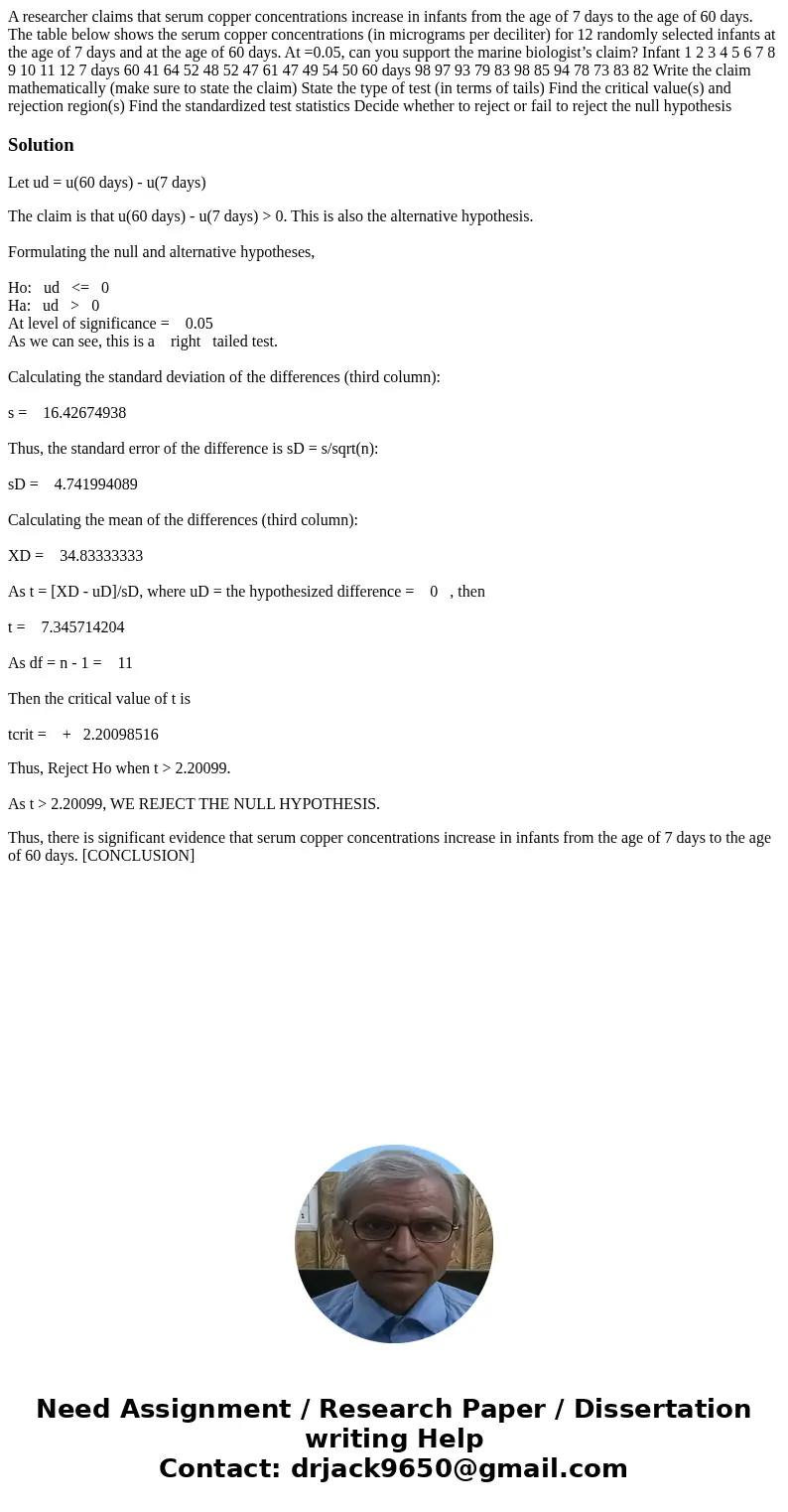A researcher claims that serum copper concentrations increas
A researcher claims that serum copper concentrations increase in infants from the age of 7 days to the age of 60 days. The table below shows the serum copper concentrations (in micrograms per deciliter) for 12 randomly selected infants at the age of 7 days and at the age of 60 days. At =0.05, can you support the marine biologist’s claim? Infant 1 2 3 4 5 6 7 8 9 10 11 12 7 days 60 41 64 52 48 52 47 61 47 49 54 50 60 days 98 97 93 79 83 98 85 94 78 73 83 82 Write the claim mathematically (make sure to state the claim) State the type of test (in terms of tails) Find the critical value(s) and rejection region(s) Find the standardized test statistics Decide whether to reject or fail to reject the null hypothesis
Solution
Let ud = u(60 days) - u(7 days)
The claim is that u(60 days) - u(7 days) > 0. This is also the alternative hypothesis.
Formulating the null and alternative hypotheses,
Ho: ud <= 0
Ha: ud > 0
At level of significance = 0.05
As we can see, this is a right tailed test.
Calculating the standard deviation of the differences (third column):
s = 16.42674938
Thus, the standard error of the difference is sD = s/sqrt(n):
sD = 4.741994089
Calculating the mean of the differences (third column):
XD = 34.83333333
As t = [XD - uD]/sD, where uD = the hypothesized difference = 0 , then
t = 7.345714204
As df = n - 1 = 11
Then the critical value of t is
tcrit = + 2.20098516
Thus, Reject Ho when t > 2.20099.
As t > 2.20099, WE REJECT THE NULL HYPOTHESIS.
Thus, there is significant evidence that serum copper concentrations increase in infants from the age of 7 days to the age of 60 days. [CONCLUSION]

 Homework Sourse
Homework Sourse